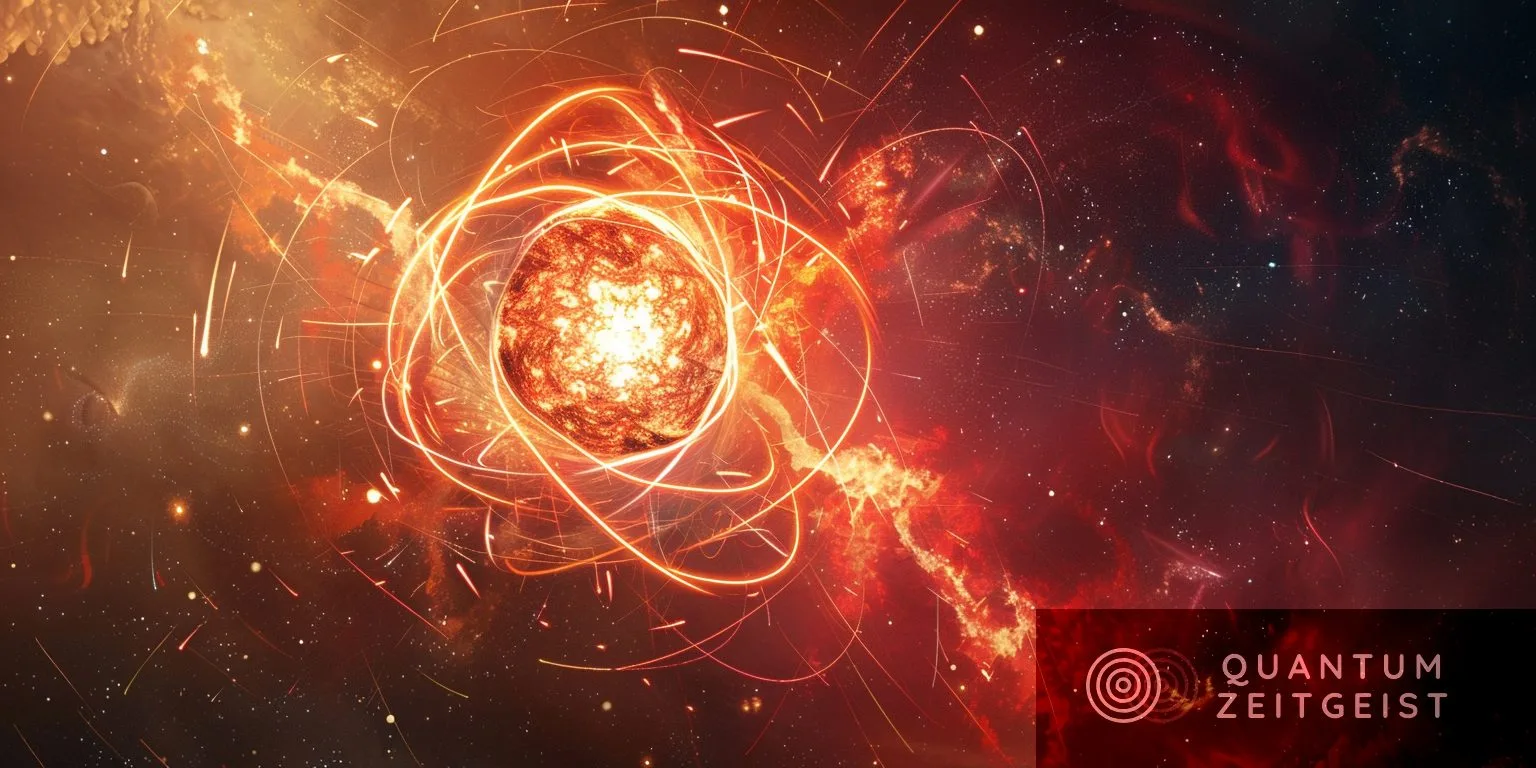The Quantum Imaginary Time Evolution (QITE) algorithm, a direct implementation of the classical imaginary time evolution algorithm on a quantum computer, has successfully solved nuclear Hartree-Fock equations. The algorithm was tested on a helium-4 nucleus using a simplified Skyrme interaction, with results identical to those from the classical algorithm. This development in quantum computing could potentially be used to solve other complex quantum mechanical problems. The study also provides a benchmark for future research, as a starting point for more sophisticated models with highly correlated states.
What is the Quantum Imaginary Time Evolution (QITE) Algorithm?
The Quantum Imaginary Time Evolution (QITE) algorithm is a direct implementation of the classical imaginary time evolution algorithm on a quantum computer. This algorithm has been implemented for the case of nuclear Hartree-Fock equations in a formalism equivalent to nuclear density functional theory. The QITE algorithm has been demonstrated in the case of the helium-4 nucleus with a simplified effective interaction of the Skyrme kind. The results from the QITE, as implemented on a simulated quantum computer, were found to be identical to the results from the classical algorithm.
The QITE algorithm is a significant development in the field of quantum computing. Quantum computers have evolved from hypothetical devices to real systems capable of harnessing quantum entanglement and the efficient representation of information to bring a new paradigm to computation and information processing. One major area of application of quantum computers is in the simulation of other quantum systems, where qubit encoding of wave functions of many-particle systems can be enacted particularly efficiently.
How is QITE Used in Nuclear Physics?
In nuclear physics, general quantum algorithms such as the variational quantum eigensolver (VQE) and its extensions have been widely used to find energy eigenvalues in systems such as the deuteron, as represented through an effective field theory, the Lipkin-Meshkov-Glick model, and the nuclear shell model. The QITE algorithm is used to solve the nuclear Hartree-Fock equations using a simplified but typical nuclear effective interaction of the Skyrme form. This gives rise to the usual nonlinear Schrödinger equation, which can also be cast as a density functional theory problem.
The implementation of the QITE algorithm on a quantum computer serves as a benchmark and a starting point for much more sophisticated models with highly correlated states, where quantum algorithms should be more useful. The procedure can be considered as a kind of state preparation algorithm for deeper quantum simulation itself, a topic of general interest, or as the starting point for quantum algorithms such as symmetry restoration as proposed for use with nuclear-like systems.
What is the Nuclear Model Used in the Study?
The nuclear model used in the study involves a nucleus consisting of N strongly interacting nucleons. The time-independent Schrödinger equation governing the N-body wave function cannot be solved exactly in general and reasonable approximations are usually required. One common method for describing the nuclear structure and low-energy dynamics is the mean field approximation. By treating each of the N interacting particles as a single particle in the field created by the remaining N-1 particles, the N-body problem is essentially reduced to a self-consistent one-body problem.
The Skyrme interaction, a form of the nuclear interaction appropriate for use in the mean-field limit, is used in the study. The Skyrme interaction starts with a potential consisting of a two-body term and a three-body term. For Hartree-Fock calculations in which the nuclear wave function is assumed to be a Slater determinant of single particle states, the three-body term is equivalent to the density-dependent two-body interaction.
How Does the QITE Algorithm Work?
The QITE algorithm works by implementing the classical imaginary time evolution algorithm on a quantum computer. The algorithm is used to solve the nuclear Hartree-Fock equations, which are a set of equations used in quantum mechanics to describe the behavior of a system of particles. The QITE algorithm uses a simplified but typical nuclear effective interaction of the Skyrme form, which gives rise to the usual nonlinear Schrödinger equation. This equation can also be cast as a density functional theory problem.
The QITE algorithm has been demonstrated in the case of the helium-4 nucleus with a simplified effective interaction of the Skyrme kind. The results from the QITE, as implemented on a simulated quantum computer, were found to be identical to the results from the classical algorithm. This suggests that the QITE algorithm could be a useful tool for solving complex quantum mechanical problems.
What are the Implications of the Study?
The study has several implications for the field of quantum computing and nuclear physics. Firstly, it demonstrates that the QITE algorithm can be successfully implemented on a quantum computer to solve the nuclear Hartree-Fock equations. This suggests that quantum computers could potentially be used to solve other complex quantum mechanical problems.
Secondly, the study provides a benchmark for future research in the field. The implementation of the QITE algorithm on a quantum computer serves as a starting point for more sophisticated models with highly correlated states, where quantum algorithms should be more useful.
Finally, the study contributes to the broader understanding of quantum systems. The procedure can be considered as a kind of state preparation algorithm for deeper quantum simulation itself, a topic of general interest, or as the starting point for quantum algorithms such as symmetry restoration as proposed for use with nuclear-like systems.
Publication details: “Quantum simulation approach to implementing nuclear density functional theory via imaginary time evolution”
Publication Date: 2024-04-18
Authors: Yang Hong Li, Jim Al-Khalili and P. D. Stevenson
Source: Physical review. C
DOI: https://doi.org/10.1103/physrevc.109.044322

